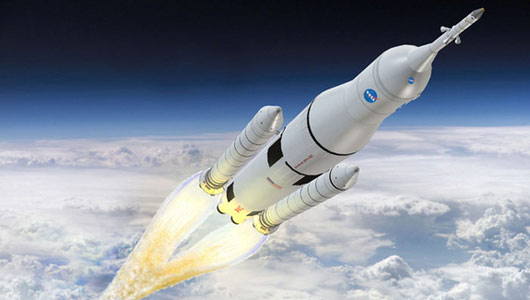If humanity wants to further explore the solar system and beyond, a new type of jet fuel is in order. Fortunately, for the first time in 30 years, researchers at the U.S. Department of Energy’s Oak Ridge National Laboratory (ORNL) were able to produce 50 grams of plutonium-238, a plutonium isotope intended to power deep space missions.
Radioisotope power systems convert heat generated by the natural radioactive decay of plutonium-238 into electricity. This technology has long been used to fuel the exploration of the solar system, including the Viking missions on Mars, the Voyager spacecraft, the Curiosity Mars Rover and the New Horizons spacecraft venturing past Pluto.(1)
“This significant achievement by our team mates at DOE signals a new renaissance in the exploration of our solar system,” noted John Grunsfeld, associate administrator for NASA’s Science Mission Directorate in Washington. “Radioisotope power systems are a key tool to power the next generation of planetary orbiters, landers and rovers in our quest to unravel the mysteries of the universe.”(1)
Fueling the next generation of radioisotope power systems
The production of plutonium, which comes two years after NASA started funding the project, is a milestone for engineers and technicians at ORNL. By demonstrating the key steps in fuel production, officials are assured that this technology will be able to power deep space missions in the coming decades. The Department of Energy (DOE) has successfully provided innocuous radioisotope power systems for NASA, Navy and Air Force missions for over 50 years.
“As we seek to expand our knowledge of the universe, the Department of Energy will help ensure that our spacecraft have the power supply necessary to go farther than ever before,” explained Franklin Orr, Undersecretary for Science and Energy at DOE. “We’re proud to work with NASA in this endeavor, and we look forward to our continued partnership.”(1)
The current radioisotope power system, which was also provided to NASA by the DOE, is dubbed the Multi-Mission Radioisotope Thermoelectric Generator (MMRTG). At its core is nuclear battery, which can supply approximately 110 watts of electrical power to a spacecraft and its scientific gadgets at the beginning of a mission.(1)
Parting company with conventional spacecraft
While the production of plutonium is a milestone in terms of space travel, the technology it powers will still be based on conventional spacecraft. If NASA really wants to venture beyond the solar system in a reasonable time, however, they will also have to venture past the known laws of physics.
One discovery that parts company with conventional spacecraft technology, like radioisotope power systems, is the reactionless EM drive developed by the Eagleworks Laboratory at the Johnson Space Center in Texas. In theory, the device could travel to Mars in as little as three weeks.(2)
Unlike conventional spacecraft, the EM drive is powered by the sun, rather than plutonium. It creates thrust by bouncing microwaves around in an enclosed chamber. The EM drive parts company from the known laws of physics, because it lacks a reaction as dictated by Newton’s third law of motion, which states that for every reaction, there is an equal and opposite reaction. The reactionless drive should be impossible, since the craft can perform an action (propulsion) without a corresponding reaction (ignition of fuel and expulsion of mass). And yet, the EM drive still seems to work.(2)
If the EM drive becomes fully functional, it will make space travel as seen in Star Wars a reality. Experts are currently testing to see if there indeed is a glitch in the EM drive, which makes it appear to violate Newton’s Laws of Motion. Meanwhile, the DOE’s Office of Nuclear Energy will continue to develop radioisotope power systems for future space missions.
Sources include:
(1) ScienceDaily.com
(2) Space.news
















